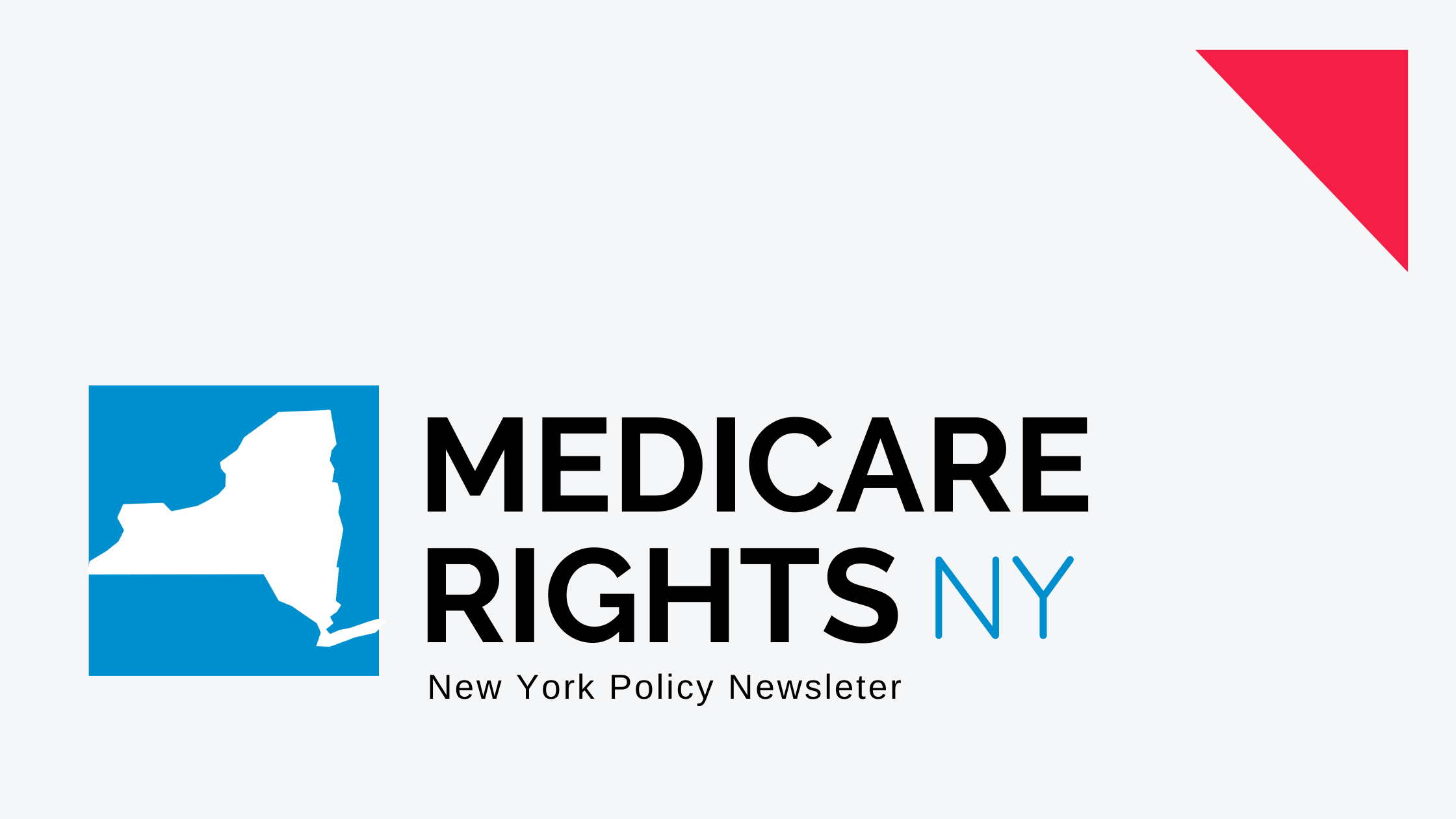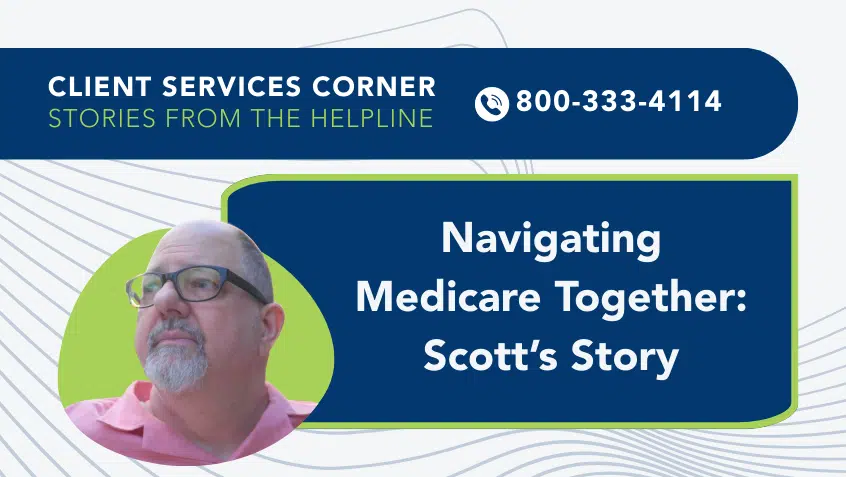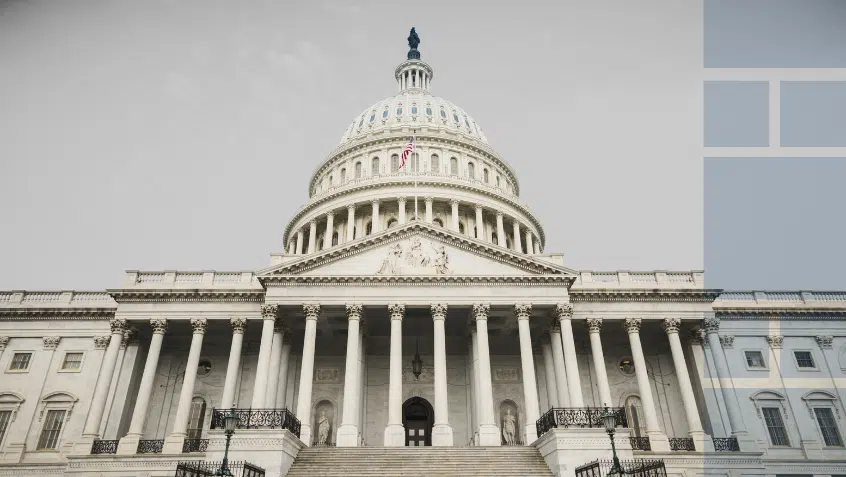Join Us Live for a Discussion on Medicare, Democracy, and the Future of Health Care

Medicare Rights Advocacy
Medicare Rights submits feedback to CMS on FIDA nonrenewal notices
In July, the Medicare Rights Center sent feedback to the Centers for Medicare & Medicaid Services (CMS) on their draft nonrenewal notices for the Fully Integrated Duals Advantage (FIDA) program. These nonrenewal notices were to be sent to beneficiaries currently enrolled in FIDA to inform them that their FIDA coverage would end after December 31, 2019, and that they would need new coverage for January 1, 2020.
In its comments, Medicare Rights suggested that CMS include a clearer explanation of alternative coverage options (e.g., PACE, Medicaid Advantage Plus (MAP), and managed long-term care (MLTC)), deadlines by which any enrollment decisions must be made, and information about continuity of care rights.
As a reminder, all FIDA enrollees should have received nonrenewal notices by October 2. For more information about FIDA’s closure and coverage options for dually eligible New Yorkers, view Medicare Rights’ Medicare Interactive toolkit.
NYSDOH releases final FIDA phase-out plan
On September 23, the New York State Department of Health (NYSDOH) released its final phase-out plan for the FIDA program. The phase-out plan provides a detailed overview of how NYSDOH will handle the end of FIDA and transition current enrollees to new coverage effective January 1, 2020. It also reviews coverage options, information included in nonrenewal notices, and continuity of care rights provided to beneficiaries.
The final phase-out plan also addresses some of the comments that Medicare Rights submitted to NYSDOH in a July letter from the Coalition to Protect the Rights of New York’s Dually Eligible (CPRNYDE). Notably, the final phase-out plan names the FIDA plans approved for passive enrollment (meaning that eligible enrollees in the plan’s FIDA product will be moved to their MAP product effective January 1, 2020, unless the enrollee chooses alternative coverage), clarifies questions related to enrollment, and adds Medicare Special Enrollment Period (SEP) information.
New York State and Federal Government Updates
Fall Open Enrollment reminders
Fall Open Enrollment occurs each year from October 15 through December 7. At this time, beneficiaries can join a new Medicare Advantage Plan or stand-alone prescription drug (Part D) plan, or switch between Original Medicare (with or without a Part D plan) and Medicare Advantage. Any changes made during Fall Open Enrollment take effect January 1.
During Fall Open Enrollment, beneficiaries should review their current health and drug coverage, regardless of whether or not they are satisfied with their current coverage, because much can change from year to year.
Beneficiaries with Original Medicare should read their 2020 Medicare & You handbook to know about Medicare costs and benefits for the upcoming year. Beneficiaries enrolled in a Medicare Advantage Plan or Part D plan should receive an Annual Notice of Change (ANOC) or Evidence of Coverage (EOC) from their plan. These notices detail any changes in the plan’s costs, benefits, and rules for the upcoming year. Even if a beneficiary has had no issue with their plan in the past year, keep an eye out for these letters to be aware of how the plan might change in the coming year.
Beneficiaries with Extra Help should also be aware that they will need to use Fall Open Enrollment if they want to make any coverage changes between October 1 and December 31. The Extra Help SEP is only for the first three calendar quarters of the year. Any changes made will take effect January 1. Remember, beneficiaries interested in Extra Help or other low-income programs can apply at any time, including during Fall Open Enrollment.
To help beneficiaries and professionals navigate Fall Open Enrollment, Medicare Rights has released a new 2019 guide. Medicare Rights will also host a webinar on Fall Open Enrollment and Medicare changes for 2020 on October 24.
Medicare Rights urges CMS to continue to improve Medicare Plan Finder
Last month, Medicare Rights sent a letter to CMS Administrator Seema Verma applauding the agency’s efforts to update the Medicare Plan Finder but also urging CMS to make additional improvements to the tool.
The new Plan Finder includes a number of important changes that Medicare Rights has long supported, including an improved user experience with a streamlined design and more intuitive presentation. However, additional revisions could make the tool clearer, more accurate, and more functional. Medicare Rights’ recommendations included improving the sort and summary features to account for data of importance to users— such as drug cost and formulary information—and clarifying potentially confusing language displays.
Medicare Rights looks forward to continuing to work with CMS to ensure that older adults and people with disabilities have the tools and resources they need to make informed coverage decisions.
For helpful tips on using the new Medicare Plan Finder, read Medicare Rights’ blog post.
Medigap plans in 2020
As a result of the Medicare Access and CHIP Reauthorization Act of 2015 (MACRA), individuals who are newly eligible for Medicare on or after January 1, 2020, will not be able to purchase Medigap Plan C or Plan F (including the Plan F high deductible option). This is because after January 1, 2020, MACRA prevents individuals new to Medicare from purchasing Medigaps that pay for the Part B deductible, and both Plan C and Plan F cover the Part B deductible.
This law also applies to the three states (Massachusetts, Minnesota, and Wisconsin) that operate their own Medigap systems. People new to Medicare in those states will not be allowed to purchase Medigaps that pay for the Part B deductible.
These Medigap changes only affect individuals who are newly eligible for Medicare in 2020 and after. Beneficiaries who currently have Medigap Plan C or Plan F can continue to renew it. Beneficiaries eligible for Medicare before January 1, 2020, who did not enroll will be able to purchase Plan C or Plan F as long as they are within the Medigap open enrollment period or have a guaranteed issue right.
For more information about Medigaps in 2020, please read Medicare Rights’ blog post.
IRMAA changes for 2020
Each year CMS releases new figures for the Income-Related Monthly Adjustment Amount (IRMAA) that individuals with incomes above a certain level pay for their Part B and Part D premiums. For 2020, CMS will also make changes to the adjusted gross income (AGI) brackets. All except the highest income brackets ($500,000 and above for single individuals, $750,000 and above for married couples filing jointly, $415,000 and above for married couples filing separately) will be adjusted for inflation.
The highest income brackets will remain the same until 2028. For the new IRMAA amounts and other annual changes in Medicare costs, check Medicare Interactive, which will provide updated standard Medicare costs information as it becomes available.
Client Story
Assisting a client with EPIC enrollment during Fall Open Enrollment
Mrs. K called Medicare Rights’ national helpline during Fall Open Enrollment for assistance finding a new Part D plan for herself and her husband. During the Plan Finder process, a Medicare Rights counselor screened Mrs. K and her spouse for programs that help reduce Medicare costs for beneficiaries. The counselor recognized that Mrs. K and her husband were eligible for New York’s Elderly Pharmaceutical Insurance Coverage (EPIC) program, which helps older adults with Medicare pay for prescription costs.
Medicare Rights provided Mrs. K with different options for Part D coverage that would be effective for her starting January 1. The counselor also submitted an EPIC application on the couple’s behalf.
Register for Medicare Rights NY
Medicare Rights NY is a regular email newsletter with updates on health policy and advocacy developments in New York State and their impact on older adults and people with disabilities. Stay up-to-date on key policy developments that affect older New Yorkers and those with disabilities.
Show Comments
We welcome thoughtful, respectful discussion on our website. To maintain a safe and constructive environment, comments that include profanity or violent, threatening language will be hidden. We may ban commentors who repeatedly cross these guidelines.
Help Us Protect & Strengthen Medicare
Donate today and make a lasting impact
More than 67 million people rely on Medicare—but many still face barriers to the care they need. With your support, we provide free, unbiased help to people navigating Medicare and work across the country with federal and state advocates to protect Medicare’s future and address the needs of those it serves.
The Latest
Most Read
Add Medicare to Your Inbox
Sign up to receive Medicare news, policy developments, and other useful updates from the Medicare Rights.
View this profile on InstagramMedicare Rights Center (@medicarerights) • Instagram photos and videos









